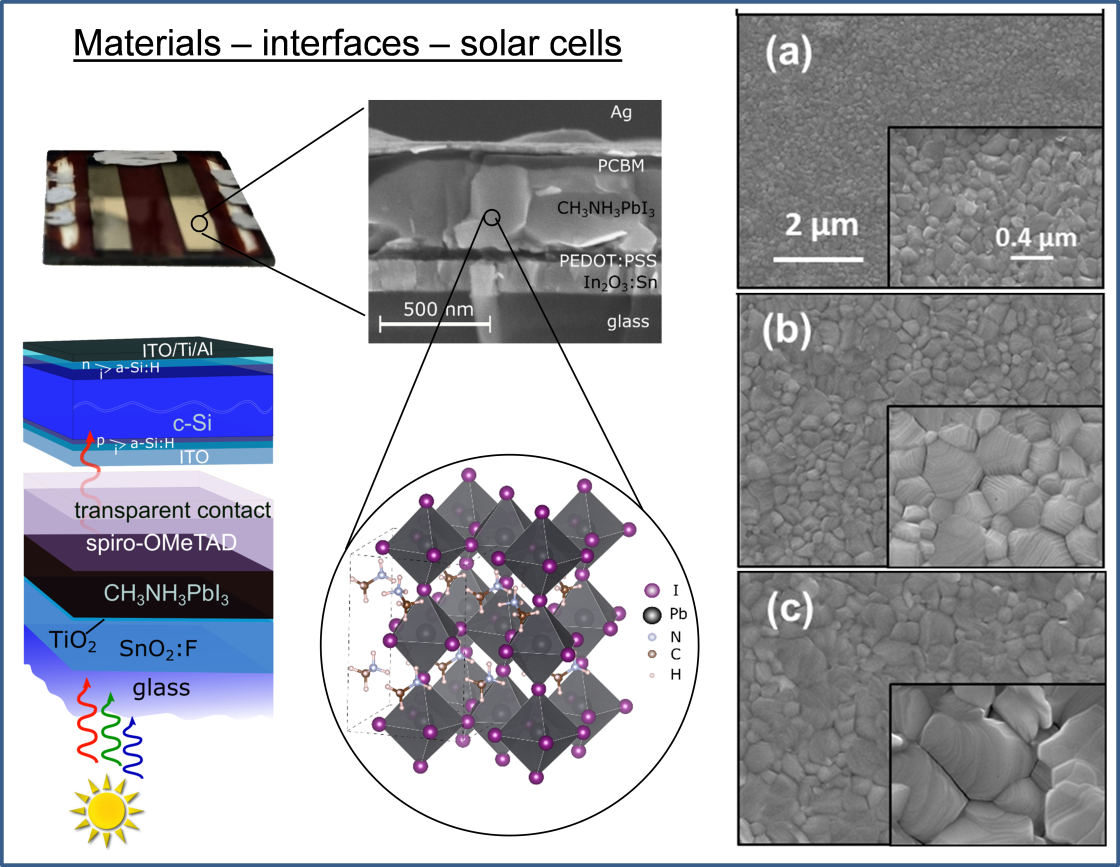Institut Silizium-Photovoltaik
Engineering of metal halide perovskite materials and interfaces
Properties of metal halide perovskites depend sensitively on the preparation conditions, morphology, stoichiometry and the formation of intermediate phases [1]. The combination of different organic cations and inorganic cations with the charge +1, for example, Cs+ or NH2CHNH2+ (formamidinium), opened the opportunity to engineer the band gap of the material and to increase the stability of solar cells based on metal halide perovskites.
The increase in annealing temperature also influences the crystal grain size (see Fig. 1 (a), (b), and (c)). To enhance the power conversion efficiency the perovskite solar cell can be combined with standard Si hetero junction device to form a tandem solar cell [2].
Additionally, perovskite layers has been investigated using graphene as novel contact material.

references
[1] The influence of the grain size on the properties of CH3NH3PbI3 thin films; Shargaieva, O.; Lang, F,; Rappich, J.; Dittrich, T.; Klaus, M.; Meixner, M.; Genzel, C.; Nickel, N.H.; ACS Applied Materials & Interfaces 9 (44) (2017), p. 38428–38435.
[2] Monolithic Perovskite/Silicon-Heterojunction Tandem Solar Cells Processed at Low Temperature; Albrecht, S.; Saliba, M.; Correa Baena, J.P.; Lang, F.; Kegelmann, L.; Mews, M.; Steier, L.; Abate, A.; Rappich, J.; Korte, L.; Schlatmann, R.; Nazeeruddin, M.K.; Hagfeldt, A.; Graetzel, M.; Rech, B.; Energy & Environmental Science 9 (2016), p. 81-88
